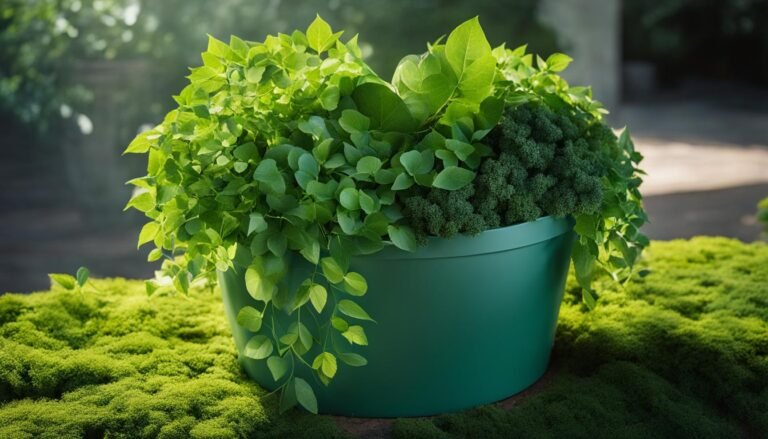Picture this: It’s a warm summer evening, and I’m sitting on my cozy balcony, surrounded by lush greenery. The soft glow of the sunset casts a warm hue on the heart-shaped leaves of my container plants. As the gentle breeze rustles through their foliage, I can’t help but feel a sense of tranquility and romance.
Heart-shaped foliage has a magical way of adding a touch of love and beauty to any space. Whether you have a small apartment balcony or a spacious patio, growing plants with heart-shaped leaves in containers can transform your outdoor oasis and make it feel like a romantic retreat.
In this guide, I will introduce you to the best plants with heart-shaped foliage that are perfect for growing in containers. From the charming Heart-Shaped Hoya to the eye-catching Dutchman’s Pipe, these plants will not only enhance your home decor but also create an enchanting garden display.
Key Takeaways:
- Heart-shaped foliage adds a romantic touch to indoor and outdoor container gardens.
- Plants like Heart-Shaped Hoya and Dutchman’s Pipe are ideal for growing in containers.
- These plants are easy to care for and can thrive as houseplants or outdoor container plants.
- Heart-shaped foliage plants add beauty and elegance to any space, making them perfect for enhancing your home decor.
- Proper care, including the right lighting and watering, is essential for the health and growth of these plants.
Heart-Shaped Hoya
The Heart-Shaped Hoya, also known as Hoya kerrii, is a popular houseplant that features waxy green leaves shaped like hearts. It is a perfect gift for Valentine’s Day or any special occasion. This evergreen plant is easy to care for and can thrive as a houseplant, filling your home with love all year round.
If you’re looking for a unique and romantic addition to your indoor garden, the Heart-Shaped Hoya is the perfect choice. Its heart-shaped leaves add a touch of whimsy and charm to any space. Whether you place it on a windowsill, shelf, or tabletop, this delightful plant is sure to catch everyone’s attention.
Characteristics of Heart-Shaped Hoya
The Heart-Shaped Hoya, or Hoya kerrii, belongs to the family Apocynaceae and is native to Southeast Asia. Here are some key characteristics of this beloved houseplant:
- Leaf shape: The leaves of the Heart-Shaped Hoya are thick, fleshy, and shaped like hearts, symbolizing love and affection.
- Leaf color: The leaves are bright green and have a glossy wax-like texture, adding a touch of shine to your indoor space.
- Growth habit: This evergreen plant has a trailing or climbing growth habit and can be trained to grow along a trellis or allowed to cascade over the edge of a hanging basket.
- Flowers: While the Heart-Shaped Hoya is primarily grown for its unique foliage, it also produces clusters of small, star-shaped flowers that have a sweet fragrance. However, it may take several years for the plant to bloom.
- Light and temperature: The Heart-Shaped Hoya thrives in bright, indirect light and prefers temperatures between 60°F and 80°F (15°C and 27°C).
- Watering: It is important to avoid overwatering the Heart-Shaped Hoya. Water the plant when the top inch of soil feels dry, and make sure the pot has proper drainage to prevent waterlogging.
Note: The Heart-Shaped Hoya is mildly toxic if ingested, so it’s important to keep it out of reach of children and pets.
Caring for Heart-Shaped Hoya
Caring for the Heart-Shaped Hoya is relatively easy, making it suitable for both novice and experienced plant enthusiasts. Here are some essential care tips:
- Light: Place your Heart-Shaped Hoya in a bright location with indirect sunlight. Avoid exposing it to direct sunlight, as it can scorch the leaves.
- Watering: Water your Heart-Shaped Hoya when the top inch of soil feels dry. Be sure not to overwater, as this can lead to root rot.
- Humidity: The Heart-Shaped Hoya prefers moderate to high humidity levels. If the air in your home is dry, consider using a humidifier or placing it on a tray filled with water and pebbles to increase humidity around the plant.
- Fertilization: Feed your Heart-Shaped Hoya with a balanced liquid fertilizer diluted to half strength once a month during the growing season (spring and summer). Avoid fertilizing during winter when the plant is in its dormant phase.
- Pruning: Prune your Heart-Shaped Hoya to control its growth and maintain its shape. You can also propagate new plants from stem cuttings taken during pruning.
| Common Name | Scientific Name | Light | Watering | Temperature | Humidity |
|---|---|---|---|---|---|
| Heart-Shaped Hoya | Hoya kerrii | Bright, indirect light | Allow top inch of soil to dry out between waterings | 60°F – 80°F (15°C – 27°C) | Moderate to high humidity |
Note: The above care requirements are general guidelines. It’s essential to monitor your specific plant’s needs and make adjustments accordingly.
The Heart-Shaped Hoya, with its unique foliage and low maintenance requirements, is the perfect plant to add a touch of love to your home. Embrace the beauty of heart-shaped leaves and create a calming and romantic atmosphere with this delightful houseplant.
Dutchman’s Pipe
The Dutchman’s Pipe, scientifically known as Aristolochia macrophylla, is a hardy climber that produces large, heart-shaped leaves. This deciduous plant adds a unique and eye-catching element to any garden. It is best grown against a wall or trellis, where it can freely grow and showcase its beautiful foliage.
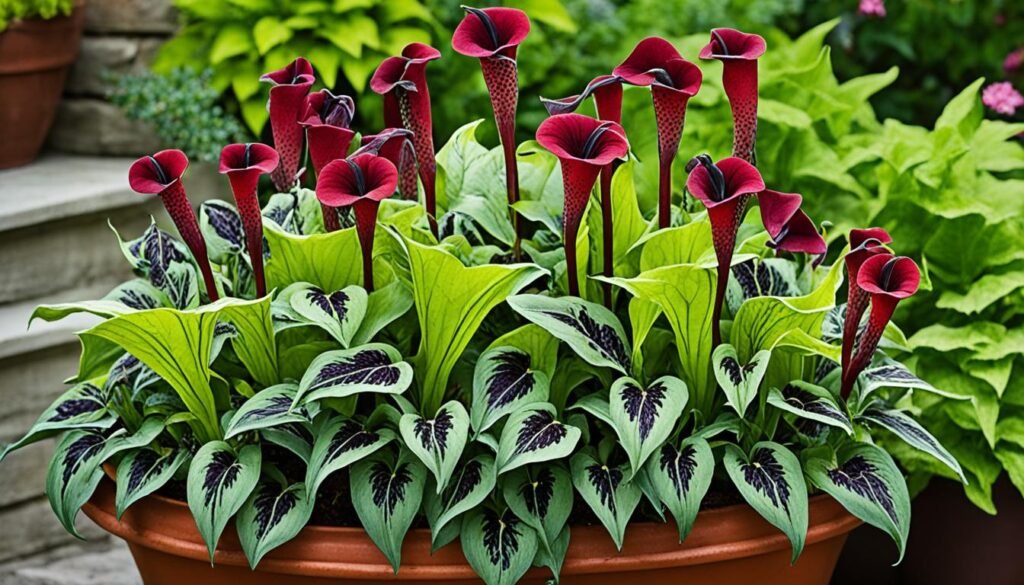
If you’re looking to add a touch of elegance and charm to your outdoor space, the Dutchman’s Pipe is an excellent choice. With its distinct heart-shaped leaves, this plant will certainly capture the attention of visitors and passersby. Whether you have a large garden or a small balcony, the Dutchman’s Pipe can be grown in containers or planted directly in the ground.
This climbing plant can reach heights of up to 30 feet, making it ideal for covering walls, fences, and pergolas. As it grows, the Dutchman’s Pipe displays a magnificent display of heart-shaped foliage that creates a captivating backdrop for other plants in your garden. Its leaves can grow as large as 12 inches wide, providing ample shade and privacy.
Apart from its stunning appearance, the Dutchman’s Pipe also attracts butterflies and hummingbirds, adding life and movement to your garden. Its flowers are small and inconspicuous but emit a pleasant fragrance that further enhances the overall ambiance.
When it comes to care, the Dutchman’s Pipe is relatively low-maintenance. It prefers well-draining soil and partial shade, but it can tolerate full sun as well. Regular watering is essential, especially during dry spells, to prevent the leaves from wilting. Pruning is necessary to maintain its shape and prevent overcrowding.
With its striking foliage and easy-to-grow nature, the Dutchman’s Pipe is an excellent addition to any garden. Its heart-shaped leaves add a touch of romance and whimsy to outdoor spaces, turning your garden into a captivating sanctuary.
Heart-Leaved Philodendron
The Heart-Leaved Philodendron, or Philodendron scandens, is a popular houseplant known for its large, heart-shaped leaves. This evergreen shrub can grow up to 4m in height and is available in various leaf colors, including green, variegated, and spotted with white and yellow. It is a low-maintenance plant that adds a touch of elegance to any space.
If you’re looking to incorporate a plant with distinctive heart-shaped leaves into your indoor garden, then the Heart-Leaved Philodendron is an excellent choice. This plant not only adds visual interest and beauty but also provides numerous benefits for your living environment.
Benefits of Heart-Leaved Philodendron:
- Improves indoor air quality by filtering and purifying the air.
- Helps to reduce stress and promote a sense of calmness.
- Thrives in low-light conditions, making it suitable for any room in your home.
- Requires minimal care and is perfect for busy individuals or beginner plant enthusiasts.
With its heart-shaped leaves, the Heart-Leaved Philodendron symbolizes love and affection, making it an ideal gift for special occasions such as anniversaries, birthdays, or Valentine’s Day. It adds a touch of elegance and sophistication to both modern and traditional interiors.
Whether you place it on a shelf, hang it in a macrame planter, or let it cascade down from a high shelf, the Heart-Leaved Philodendron is sure to make a statement and become a centerpiece in your home.
Creating the perfect ambiance in your living space is effortless with the Heart-Leaved Philodendron. Its lush foliage and unique leaf shape provide an interesting texture and visual appeal, while its low-maintenance nature ensures that even beginners can enjoy the beauty and benefits of this remarkable houseplant.
| Common Name | Scientific Name | Leaf Colors |
|---|---|---|
| Heart-Leaved Philodendron | Philodendron scandens | Green, Variegated, White and Yellow Spotted |
Whether you place it in a hanging basket, on a windowsill, or as part of a lush tropical arrangement, the Heart-Leaved Philodendron is sure to bring life and beauty to your indoor space. With its heart-shaped leaves and easy-care nature, it is a plant that will leave a lasting impression.
Foxglove Tree
The Foxglove Tree, scientifically called Paulownia tomentosa, is a medium-sized tree that adds beauty and charm to any garden. With its stunning tubular purple flowers and large, heart-shaped leaves, this deciduous tree is a true showstopper.
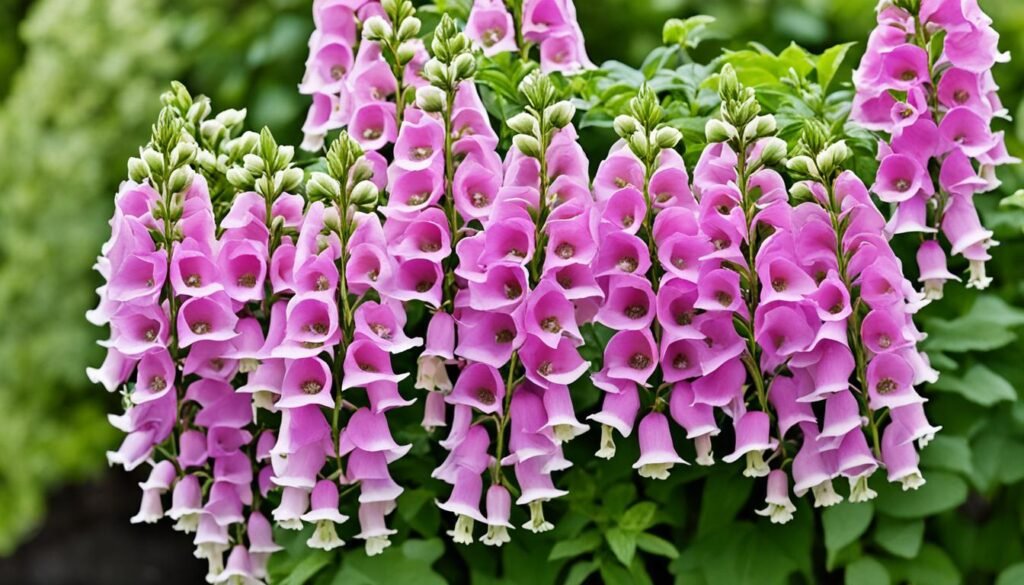
During the spring season, the Foxglove Tree blooms with clusters of elegant tubular purple flowers, creating a breathtaking display of color and attracting pollinators. These vibrant flowers contrast beautifully with the tree’s lush green foliage, which features leaves shaped like hearts, enhancing the tree’s overall appeal.
The Foxglove Tree can be a focal point in large gardens, standing tall and commanding attention. It can also be pruned to control its height, making it suitable for smaller spaces. With its unique foliage and stunning flowers, the Foxglove Tree adds a touch of elegance and sophistication to any landscape.
Key Features of the Foxglove Tree:
- Medium-sized deciduous tree
- Produces clusters of tubular purple flowers in spring
- Large, heart-shaped leaves that cover its branches
- Can be pruned to control height
- Acts as a focal point in large gardens
Benefits of Growing the Foxglove Tree:
“The Foxglove Tree adds a touch of elegance and sophistication to any landscape, making it a popular choice among garden enthusiasts. Its stunning purple flowers and heart-shaped leaves create a visually captivating display, attracting attention and admiration from all who see it. Whether as a standalone tree or a focal point in a garden, the Foxglove Tree never fails to impress.”
Creeping Oxalis
Creeping Oxalis, or Oxalis corniculata, is a small perennial plant that is commonly used as a ground cover. This plant is known for its heart-shaped leaves and vibrant yellow daisy-like flowers, which add a burst of color to any garden. However, it’s important to note that Creeping Oxalis can become invasive if not properly maintained.
When planting Creeping Oxalis, it is best to choose a shady spot in your garden. This plant thrives in partial shade and prefers moist, well-draining soil. Regular pruning is necessary to prevent it from spreading too aggressively.
Creeping Oxalis is also well-suited for container gardens. Its low-growing habit and beautiful foliage make it a lovely addition to any potted arrangement. Whether used as a ground cover or in containers, this plant brings charm and vibrancy to any space.
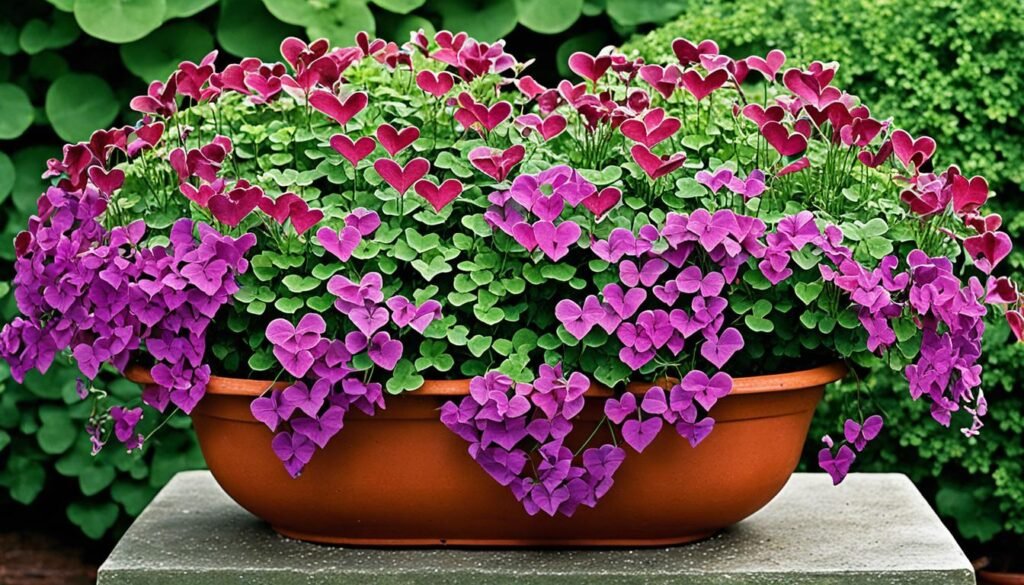
| Common Name | Scientific Name | Plant Type |
|---|---|---|
| Creeping Oxalis | Oxalis corniculata | Perennial |
Paddy’s Pride
Paddy’s Pride, or Hedera colchica ‘Sulphur Heart,’ is an evergreen shrub with stunning heart-shaped leaves that showcase a beautiful variegation of green and yellow. This vibrant color combination adds a pop of brightness and visual interest to any garden or outdoor space. With its climbing habit, Paddy’s Pride can grow up to an impressive height of 8m, making it an excellent choice for growing against a trellis or wall. Its cascading foliage creates an enchanting and lush backdrop.
This low-maintenance plant is a reliable choice for both experienced gardeners and beginners. It thrives in a variety of growing conditions and can adapt to different soil types. Paddy’s Pride is also remarkably resistant to pests and diseases, making it a hassle-free addition to your garden.
One notable feature of Paddy’s Pride is its ability to retain its vibrant foliage even during the winter months. While other plants may go dormant or lose their leaves, the heart-shaped leaves of Paddy’s Pride continue to bring color and beauty to your outdoor space, creating a striking contrast against the winter landscape.
Key Features of Paddy’s Pride:
- Evergreen shrub with heart-shaped leaves
- Variegated green and yellow foliage
- Climbing habit, reaching up to 8m in height
- Low-maintenance and resistant to pests and diseases
- Retains vibrant foliage throughout the year, even in winter
Whether you’re looking to create a lush vertical garden or add a vibrant touch to your outdoor space, Paddy’s Pride is a fantastic choice. Its unique variegated foliage and impressive climbing habit make it a standout feature in any garden or landscape.
| Plant | Scientific Name | Key Features |
|---|---|---|
| Paddy’s Pride | Hedera colchica ‘Sulphur Heart’ |
|
In addition to its striking aesthetic appeal, Paddy’s Pride offers numerous benefits to your garden ecosystem. Its dense foliage provides shelter for birds and other small animals, while its climbing habit can create a natural privacy screen. This versatile plant can also help purify the air by absorbing pollutants and releasing oxygen, contributing to a healthier environment.
For optimal growth and health, Paddy’s Pride thrives in well-draining soil and moderate sunlight. It is important to provide adequate support, such as a trellis or wall, for the plant to climb and flourish. Regular watering and occasional fertilization will help maintain its lush appearance and overall vigor.
Whether as a standalone feature or incorporated into your existing garden design, Paddy’s Pride is sure to add a touch of elegance and vibrancy to your outdoor space. Its magnificent heart-shaped leaves and variegated foliage make it a true symbol of natural beauty.
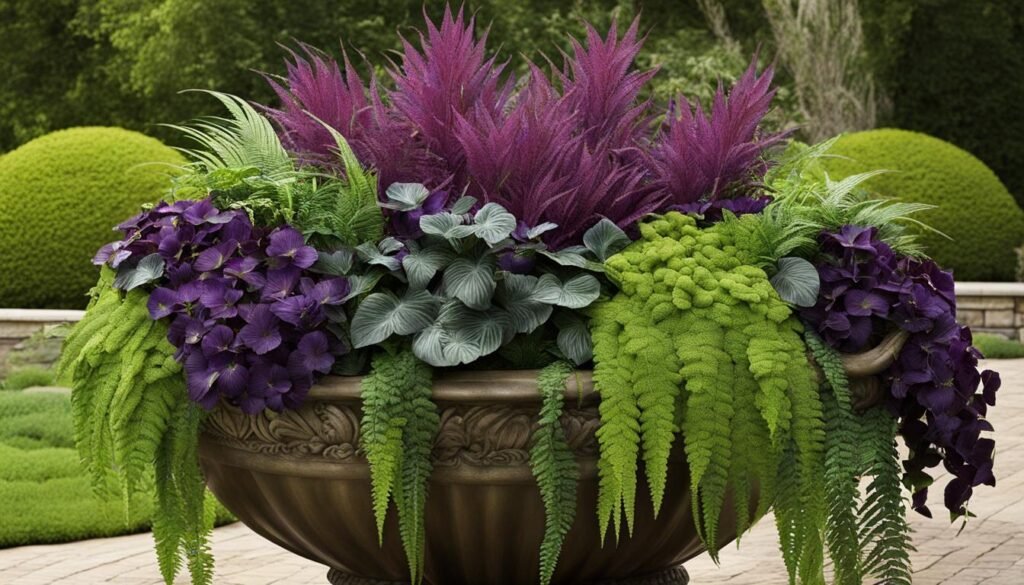
Nephthytis
Nephthytis, also known as Syngonium podophyllum, is a small shrub that belongs to the Araceae family. It is native to the tropical rainforests of South America and is commonly grown as a houseplant in the UK. This attractive plant is prized for its large, heart-shaped leaves that are typically green with silver tinges, adding a touch of elegance to any indoor space. The leaves bear a resemblance to those of a philodendron, but with their own unique charm.
When caring for Nephthytis, it is important to provide the right conditions to ensure its health and growth. This plant thrives in bright, indirect light, but should be protected from direct sunlight as it can scorch the leaves. It prefers a well-draining soil that is kept moist but not soggy. Overwatering can lead to root rot, so it’s essential to allow the top inch of soil to dry out before watering again.
In terms of temperature, Nephthytis thrives in average room temperatures between 60-75°F (15-24°C). It can tolerate slightly cooler temperatures but should be kept away from drafts and cold air. This plant also benefits from regular misting to provide the humidity it needs to thrive.
Nephthytis is relatively easy to propagate. It can be propagated through stem cuttings by taking a 4-6 inch cutting and placing it in water until roots develop. Once roots are established, the cutting can be potted in a well-draining potting mix.
As with any plant, Nephthytis may encounter some common issues such as pest infestations or leaf discoloration. Regularly inspecting the foliage for any signs of pests and promptly treating them will help keep the plant healthy. Leaf discoloration, particularly yellowing, can be a sign of over or under-watering, nutrient deficiencies, or improper lighting. Adjusting the care routine accordingly can help resolve these issues.
Benefits of Nephthytis
Nephthytis is not just visually appealing; it also offers several benefits as a houseplant. Here are some of the key advantages:
- Air purifying: Like many other plants in the Araceae family, Nephthytis has the ability to purify the air by removing toxins. It can help improve indoor air quality, making it a great addition to homes and offices.
- Compact size: Nephthytis is a small shrub that stays relatively compact, making it suitable for various spaces, including small apartments or offices with limited room for larger plants.
- Low maintenance: This plant is known for being low-maintenance and relatively easy to care for. Its adaptability to different light conditions and forgiving nature make it an ideal choice for beginners or for those who may not have a green thumb.
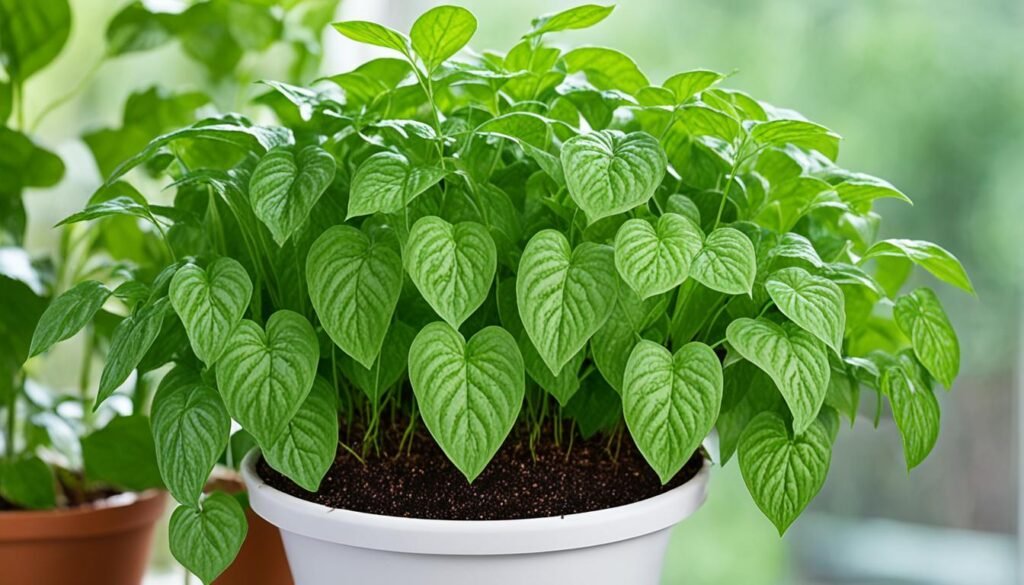
Overall, Nephthytis, with its heart-shaped leaves and ease of care, is a beautiful and practical addition to any indoor plant collection. Its ability to purify the air, compact size, and low maintenance requirements make it a popular choice among plant enthusiasts. By providing the right conditions and regular care, you can enjoy the beauty of Nephthytis in your home or office space.
Betel Pepper
When it comes to adding a vibrant touch to indoor spaces, Betel Pepper (Piper betle) is the perfect choice. This perennial plant, often grown as a houseplant in the UK, features aromatic heart-shaped leaves that not only beautify your space but also release a pleasant fragrance.
Betel Pepper is relatively easy to care for, making it suitable for beginners in plant care. With the right conditions, it can thrive and provide you with its unique charm. Here are some care tips to ensure the health and growth of your Betel Pepper:
- Lighting: Place your Betel Pepper in a bright spot with indirect sunlight. Avoid direct exposure to harsh sunlight, as it can scorch the delicate foliage.
- Temperature: Betel Pepper prefers warm temperatures ranging from 60-85°F (15-29°C). Protect it from drafts and cold temperatures.
- Watering: Keep the soil moist but not waterlogged. It’s important to strike a balance, as overwatering can lead to root rot. Check the soil moisture regularly and adjust your watering accordingly.
- Humidity: Betel Pepper appreciates high humidity levels. If your indoor environment is dry, consider using a humidifier or placing a tray of water near the plant to increase moisture.
- Fertilization: Feed your Betel Pepper with a balanced, water-soluble fertilizer once a month during the growing season. Follow the instructions on the fertilizer packaging for proper dilution.
Here’s a visual representation of Betel Pepper’s care requirements:
| Light | Temperature | Watering | Humidity | Fertilization |
|---|---|---|---|---|
| Bright, indirect light | 60-85°F (15-29°C) | Moist but not waterlogged | High humidity | Monthly, balanced fertilizer |
Remember to monitor the overall health of your Betel Pepper. Watch out for common issues like yellowing leaves, wilting, or pests. With proper care and attention, your Betel Pepper will continue to thrive and add a vibrant touch to your indoor space.
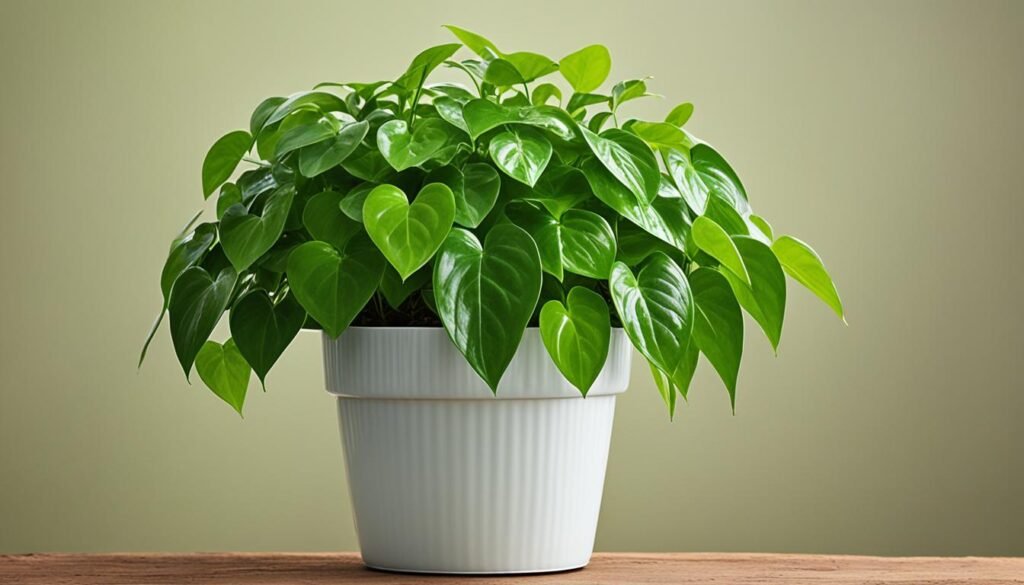
Taro
Taro, or Colocasia esculenta, is a frost-tender perennial that flourishes in warm and humid climates. With its large heart-shaped leaves, taro adds a tropical touch to any space. Whether you choose to grow it as a houseplant or incorporate it into your garden, taro is sure to make a bold statement.
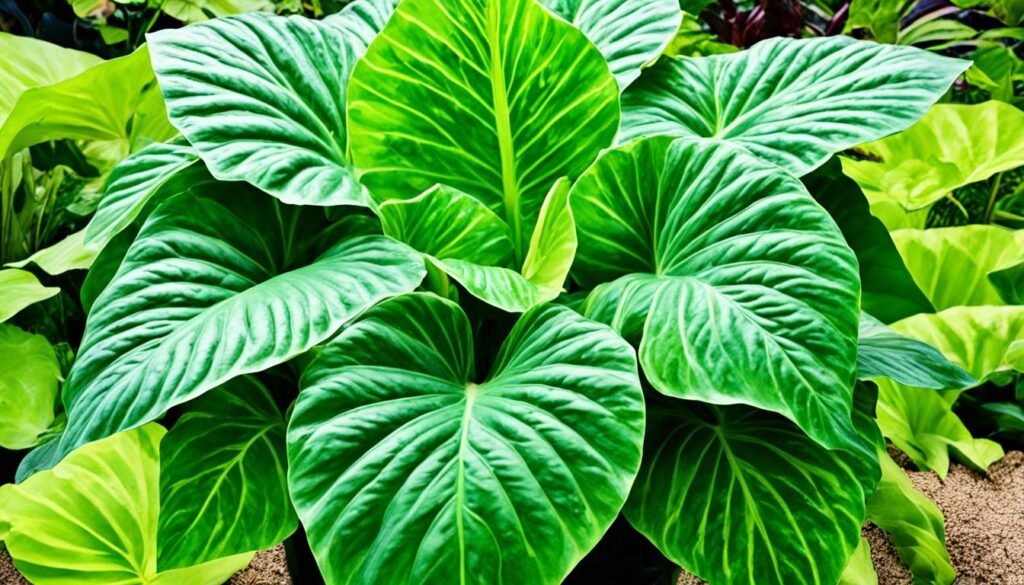
Taro is not only visually appealing but also has edible corms that can be used in a variety of dishes. Originating from Southeast Asia, this versatile plant is a staple in many cuisines, particularly in dishes such as taro chips, curries, and desserts. Its starchy texture and nutty flavor make it a popular choice among food enthusiasts.
When growing taro as a houseplant, it thrives in dark and humid spaces, such as kitchens or bathrooms. It is best to provide indirect sunlight and regular watering to keep the soil consistently moist. With adequate care, taro can grow up to 3-6 feet tall, creating an impressive focal point in any room.
“Taro’s large heart-shaped leaves bring a touch of exotic beauty to any indoor or outdoor space.”
To successfully grow taro, consider the following care tips:
- Plant taro in well-draining soil that retains moisture.
- Ensure the plant receives adequate water to keep the soil consistently moist.
- Provide indirect sunlight or filtered light to prevent the leaves from scorching.
- Fertilize taro with a balanced liquid fertilizer monthly during the growing season.
- Monitor for pests such as aphids and mealybugs, and treat accordingly.
- During the winter months, reduce watering and protect from cold drafts.
With its striking foliage and culinary versatility, taro is an exceptional choice for plant enthusiasts looking to add a unique touch to their homes or gardens. Whether you appreciate its beauty or enjoy its delicious corms, taro is a remarkable plant that will leave a lasting impression.
Redbud ‘Hearts Of Gold’
Redbud ‘Hearts Of Gold,’ scientifically known as Cercis canadensis ‘Hearts of Gold,’ is a medium-sized tree that showcases golden-green heart-shaped leaves in the autumn. It produces pink flowering clusters that resemble hearts during the spring season. This deciduous tree is a stunning focal point for large gardens.
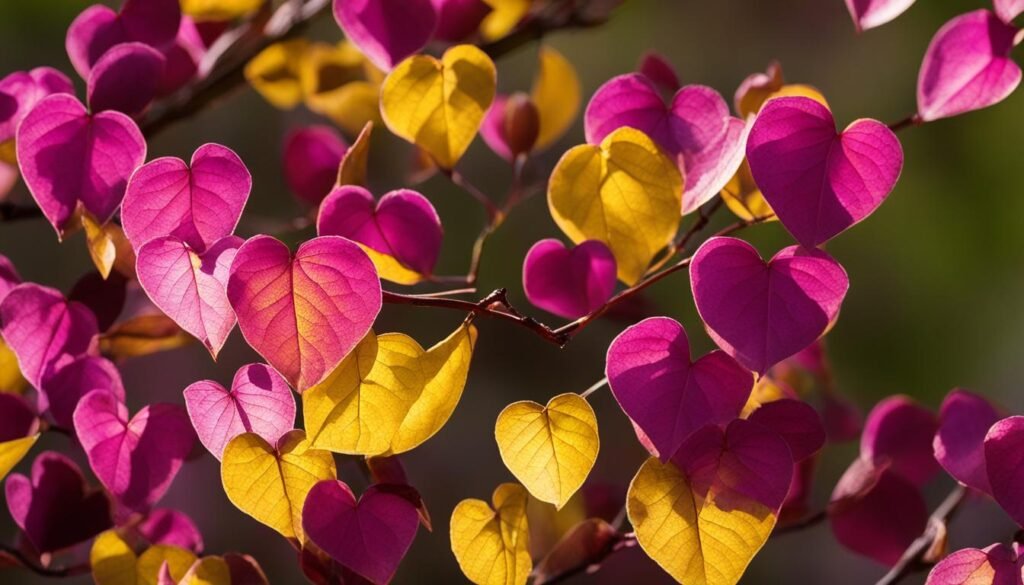
As its name suggests, Redbud ‘Hearts Of Gold’ is celebrated for its distinctive heart-shaped leaves that add a touch of elegance and charm to any landscape. The foliage of this medium-sized tree transforms into a vibrant golden-green hue, creating a breathtaking spectacle in the fall.
During the spring season, Redbud ‘Hearts Of Gold’ produces eye-catching clusters of pink flowers that resemble hearts, further enhancing its romantic appeal. This stunning display of blossoms adds a burst of color and joy to the garden, creating a captivating focal point.
Redbud ‘Hearts Of Gold’ belongs to the Cercis canadensis species and is highly sought after by gardening enthusiasts and professionals alike. Its graceful and compact form makes it suitable for large gardens, where it can be showcased as a standalone specimen or planted in groups for a dramatic effect.
When selecting a location for Redbud ‘Hearts Of Gold,’ ensure it receives ample sunlight to support optimal growth and vibrant leaf coloration. This tree thrives in well-drained soil and is relatively low-maintenance once established.
Key Features of Redbud ‘Hearts Of Gold’
- Medium-sized tree with golden-green heart-shaped leaves
- Pink flowering clusters that resemble hearts in the spring
- Deciduous tree with a compact form
- Ideal for large gardens as a standalone specimen or in groups
- Thrives in well-drained soil with ample sunlight
With its striking foliage and charming flowers, Redbud ‘Hearts Of Gold’ is a captivating addition to any garden. Whether you’re seeking to create a romantic atmosphere or simply appreciate the beauty of heart-shaped leaves, this tree is sure to leave a lasting impression.
Conclusion
Adding heart-shaped foliage plants to your container garden can create a romantic and enchanting ambiance. The Heart-Shaped Hoya, Dutchman’s Pipe, Heart-Leaved Philodendron, and other mentioned plants in this guide offer unique leaves that add beauty to both indoor and outdoor spaces.
When caring for these heart-shaped foliage plants in containers, it is essential to provide them with the right conditions. Ensure they receive adequate lighting, whether it be bright indirect sunlight or partial shade, and water them regularly, allowing the soil to dry out slightly between waterings. Remember, overwatering can lead to root rot, so it’s crucial to strike the right balance.
With proper care, these heart-shaped foliage plants will thrive, providing you with lush greenery and a touch of romance. Whether you’re a beginner or an experienced gardener, growing plants in containers can be a rewarding experience that brings beauty and tranquility to your space. So why wait? Start creating your heart-shaped foliage paradise today!
